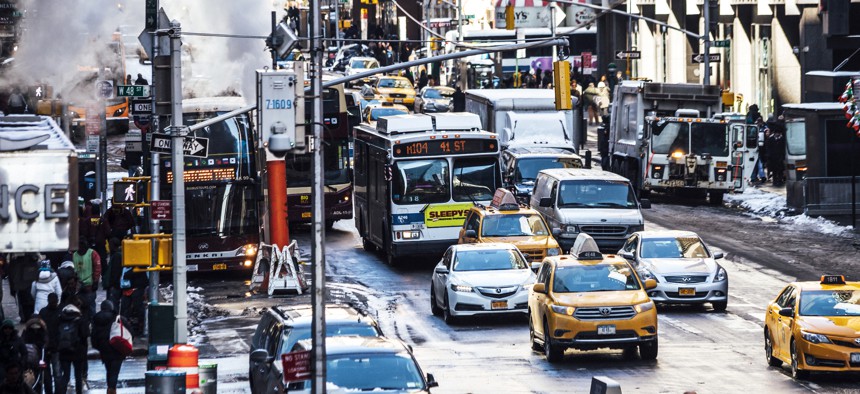AI-powered cameras to enforce bus lanes

Getty Images/peeterv
New York City's Metropolitan Transportation Authority partnered with Hayden AI on the bus-mounted cameras, which will use artificial intelligence and edge computing to process violations.
New York’s Metropolitan Transportation Authority will use an automated camera system to ensure bus lanes in New York City are free from illegally parked vehicles.
The MTA is partnering with Hayden AI to deploy Automated Bus Lane Enforcement camera systems to 300 buses, which will be mounted on the interior of the windshield and powered by artificial intelligence. The agency has the option to add the cameras to 200 more buses if it chooses.
Chris Carson, Hayden AI’s CEO and co-founder, said when the cameras detect an encroachment on a bus lane, they use real-time automated license plate recognition and edge computing to compile a packet of evidence that includes the time, date and location of the offense, as well as a brief video that shows the violator’s license plate.
That information is encrypted and sent securely to the cloud, where MTA officials can access and analyze it for violations. If there is no encroachment on a bus lane, the cameras do not record anything.
“Ultimately our goal here is to do our part to digitally transform traffic enforcement, because we'd like to see police be able to focus on more high-value activities like crime,” Carson said. “I don't think anybody ever joined the police force to write tickets all day, they all probably wanted to make a difference in ways that might be more impactful. Let's use humans and their capabilities for that and automate some of the grunt work, which is traffic enforcement.”
An MTA spokesperson said the agency will also use data from the system to identify locations that have the highest instances of vehicles blocking bus lanes. New York City has 140 miles of bus lanes and has plans to build 150 more miles in the next four years, but congestion and lane violations from other road users slows the speed of the buses. The city already uses cameras and police patrols to attempt to enforce proper bus lane use.
Carson said the use of edge technology for real-time processing of violators can help make the bus network more efficient and could also help city planners make decisions with the metadata the system collects.
“We can take that metadata and we can use it to create a digital twin of the city,” Carson said. “Once we've got this dynamic near-real-time digital twin of the city that's constantly being updated, you can do things like simulation, you can look at curbs, understand traffic analysis or even asset management.”






